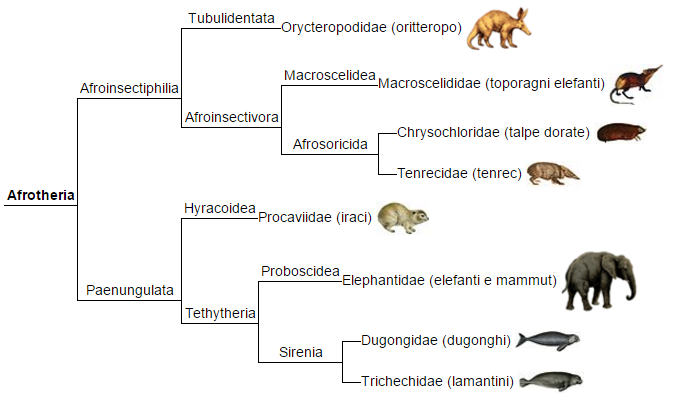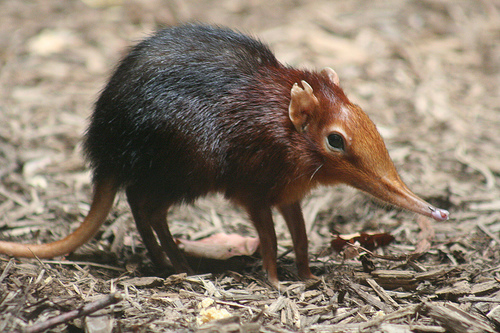- 6 Posts
- 104 Comments
I not great with estimating sizes, and i often have trouble converting things from feet to meters on the spot. Last session i presented the players a quest to slay a sea monster. They cleverly decided to scout first with a familiar, and i described the creature and its size. I ended up exaggerating the size i bit too much and they’ve decided to avoid it until they’re higher level. So what was supposed to be a simple “monster of the week” type of encounter has now turned into a late game boss fight.

 1·6 months ago
1·6 months agoInteresting choice of character for this meme. OP is a true man/woman of culture.
Ugh, that’s so annoying. Every time windows updates i have to open the BIOS and put ubuntu first on the boot order so it doesn’t skip grub.
I Also have a drive that i can access on both linux and Windows and every so often Windows will make it inaccessible on Linux because it didn’t fully unmount the drive.
Maybe those are the modifiers and Jerry has a fucking 24 Charisma.
My head-canon is that they have a shorter window of fertility. I mean humans have menopause as well.
Though it would make more sense if that happens later in their lives, otherwise you’re saying every adventurer has given up the possibility of raising kids. Also, i suppose if that’s the case they haven’t really matured in the sexual sense, so much as they’ve just grown enough to be independent.
I seem to remember some bit of lore saying dwarves only settle down to have kids near the end of their lives, but i can’t find that anywhere ( Might’ve just imagined it, lol).
Maybe adventuring across ages with different heirs of humans who go from weak to strong extremely fast while elves start strong and grow slowly?
That sounds cool but you’d need all your quests to span generations and leveling in general would be very slow. Probably harder to make it balanced as well.
Rules don’t apply to you when you’re a motherfucking dragon, lol. They’re so broken they don’t need to hurry up growing, cause they’re already at the top of the food chain at basically any stage in their lives.
Leveling in general gets more confusing the more you try to explain it.
Why has my old character never leveled up before i started playing them?
Why has my Elf/Dwarf/etc never leveled up in hundreds of years?
If i can level up from 1 to 20 in a matter of days, why isn’t every adventurer level 20 by now?
Also, even outside of level:
How isn’t there a massive overpopulation issue when these races have hundreds of years to procreate? Instead they always seem to be rarer than humans.
Why would any job ever hire humans when elves/dwarves exist? They could acummulate way more experience and be better at basically anything.
In fact, why aren’t Dwarves/Elves just better at everything? Do they learn things at a slower rate? But if that’s the case, how come they can level up so fast once we start playing them?
I mean, really, at some point we gotta draw a line in the sand and decide that some things just need to be handwaved for the sake of fantasy.
They grow into adulthood at the same rate as humans, but after that point they age at a slower rate.
As per the PHB, page 23:
“AIthough elves reach physical maturity at about the same age as humans, the elven understanding of adulthood goes beyond physical growth to encompass worldly experience. An elf typically claims adulthood and an adult name around the age of 100 and can live to be 750 years old”
And page 20:
“Dwarves mature at the same rate as humans, but they’re considered young until they reach the age of 50, On average, they live about 350 years.”
So i did get some things mixed up, for Dwarves it’s 50, not 100. Same idea though.
I know it sounds weird at first, but It actually makes a ton of sense. I mean, even outside of fantasy, the amount of time an animal takes to reach maturity isn’t really proportional to how long it lives, it has more to do with its intelligence, which is about the same for all D&D races. For a lot of animals, reaching full maturity only takes a couple of months tops. Turtles can live way longer than humans yet they mature in about 5 to 8 years depending on the species.
Humans are already pushing it with about 2 decades worth of growing, having to spend a literal century as a kid, especially in a world as dangerous as the forgotten realms would be insane.
Friendly reminder that although you can homebrew it to be like this if you want, in the official D&D 5e lore, Elves and Dwarves mature at the same rate as humans, so they’re all adults at 21.
Culturally is a little different, much like some older humans still view people in their 20s as “kids”, elves and dwarves will only consider themselves to be truly adults after at least 100 years or so, but that’s just a social stigma, not how they are biologically.
I used to have a problem with this as a DM, where i’d get kinda anxious if nothing is happening or no one’s talking and just start moving things too fast out of fear they’d be bored.
But moments of silence are an important part of it, especially if you want them to roleplay. Players usually don’t have stuff planned ahead of time like you do, so you gotta give them some time to think about what to say, lol. Plus if feels way more natural to have them speak to eachother on their own time instead of rapid-firing lines.
Ya also can’t force roleplay. Just give them some space, maybe some chill moments in between the action and they’ll take it if they feel like it. Though if they’re shy/new it can be good to start the convo with an NPC or simply ask them what’s going through their characters minds at the moment. I find that tends to help.
deleted by creator

 4·7 months ago
4·7 months agol mostly agree and i don’t really ever fudge, but i don’t really like instant death, as it’s mostly just luck. If they die from poor choices or failed death rolls i don’t mind, but like, i’ve had players at full healh “die” because the monster rolled a crit and the highest number on both damage rolls. I ended up just downing him and giving him a cool scar after he got up cause that’s bonkers and it was literally the first fight of the campaign, lol.
I might make changes to the number of monsters or their stats, but that’s always something i do before the fight, never during it. Homebrewing is alot different than fudging imo. Once the players have seen it, it’s set in stone.
Faeladelfia

 4·7 months ago
4·7 months agoMe: This is a really simple task, i can finish it in like 30min, an hour tops.
My brain: Exactly why we can postpone it longer.
When i say they’re one of the closest, it doesn’t necessarily mean they’re close, just that a lot of the other, more closely related ones, such as mammoths, are extinct. That said, the closest living relatives to elephants are actually manatees and dugongs.
These are still different animals that evolved to fill different niches though. They’re part of the clade Afrotheria, which is very, very diverse.

For more information on why this is such a diverse clade, i’d recommend Clint’s Reptiles’ video about it: https://youtu.be/bO2DpSJtFBo
All Birds are dinosaurs, but not all dinosaurs are birds. All dinosaurs are reptiles, but not all reptiles are dinosaurs. Crocodylians for example, are not dinosaurs

I’m not sure about chickens specifically, but as you can see above, all birds are part of the theropod clade, which is the same clade as T-Rex, so they are indeed closely related.
Convergent evolution tends to happen when animals face similar environmental challenges, because sometimes a certain body plan is simply the most efficient way to tackle these challenges. For example, if animal A and animal B both live in the water, and they both need to swim fast to fill their niche, they’re likely going to evolve a similar streamlined body with dorsal and pectoral fins. Ex. Sharks, Dolphins and Ichthyosaurs.
My favorite example of how cladistics has changed our perception of animals is the elephant shrew.

We named it shrew because it’s obviously a shrew, right? And the elephant part was just a funny little joke because of his big snout, even though it obviously isn’t related to elephants! Well, it turns out that not only is it NOT a shrew, it is actually one of the closest living relatives to elephants! How crazy is that?
Okay, so the classic classification we all learned in school, that separates animals in Kingdom, Phylum, Class, Order, Family, Genus and Species, was created by a guy called Linneaus.
Now, back in Linneaus’ time, they didn’t know about evolution, much less genetics, so he tried to classify animals based on the physical similarities he could see. All animals with scales in the same group (reptiles), all animals who lactate in the same group (mammals), all animals with feathers in the same group (birds), and so on and so forth.
Nowadays, though, we can use genetics to determine more precisely how related different species of animals are to eachother, and so comes a new classification, that puts animals that evolved from the same ancestor together in the same group. Which is the cladistic classification
Now a lot of animals did fit more or less with the linnean classification, but a lot of them don’t. A lot of animals we thought were related are actually very distant genetically and only look similar due to convergent evolution, and a lot of the ones we thought had nothing to do with eachother turned out to be be really closely related.
Birds and reptiles are one such case. Both birds and the animals we more commonly consider as reptiles, are descended from the same ancestor and are currently considered part of the class Reptilia, which are all diapsids, meaning they have two openings on each side of the skull. Not only that, birds are descendants of a now extinct group of theropod dinosaurs called Archaeopteryx, which makes them living, breathing dinosaurs!




I mean, i’d argue that a car costs a bit more than $150, but i see your point.